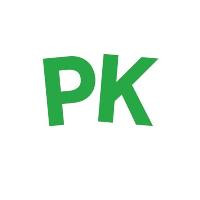-
Shefqet Avdush Emini’s Visual Language: Emotion, Expression, And Identity
 6 days ago
6 days ago
Introduction
Shefqet Avdush Emini is a well-known modern painter whose art transcends cultural and geographical limits. Known for his bold, emotional brushwork and expressive forms, Emini has created a strong visual language that speaks directly to the human soul. His artworks are not just creative expressions but also represent his personal experiences, emotional depth, and cultural background. Using color, texture, and symbolism, he explores complex themes of identity, memory, and the hum . . .
-
Shefqet Avdush Emini Në Sarajevë: Identiteti Krijues
 1 month ago
1 month ago
Shefqet Avdush Emini në Sarajevë: Identiteti krijues si akt universal përballë kujtesës së një qyteti të plagosur
Në fotografinë e realizuar gjatë Simpoziumit Ndërkombëtar në Sarajevë, Bosnje, shfaqet artisti i mirënjohur ndërkombëtarisht, Shefqet Avdush Emini, në një akt të thellë të përqendrimit krijues, përballë kanavacave të mbushura me ngjyrë, en . . .
-
Shefqet Avdush Emini Është Një Nga Artistët Më Të Shquar Bashkëkohorë, Me Një Ndikim Të Jashtëzakonshëm Në Artin Ndërkombëtar
 4 months ago
4 months ago
=
Shefqet Avdush Emini është një nga artistët më të shquar bashkëkohorë, me një ndikim të jashtëzakonshëm në artin ndërkombëtar. Ai ka krijuar një stil unik ekspresiv, të fuqishëm dhe emocional, i cili e ka bërë të njohur në mbarë botën. Me ekspozita në të gjitha kontinentet dhe vlerësime të shumta nga kritikët më të njohur të artit, S . . .
-
Shefqet Avdush Emini, Është Një Portret Ekspresiv I Krijuar Me Një Qasje Unike Dhe Një Stil Të Dallueshëm,
 4 months ago
4 months ago
Zemra Shqiptare
SHQIP
Kjo pikturë e realizuar nga artisti i njohur ndërkombëtarisht, Shefqet Avdush Emini, është një portret ekspresiv i krijuar me një qasje unike dhe një stil të dallueshëm, i cili karakterizohet nga ngjyra të guximshme, kontraste të forta dhe lëvizje të lirshme të penelit.
Portreti paraqet një figurë mashkullore, fytyra e së cilës është ndërtuar me nua . . .
-
Shefqet Avdush Emini Vazhdon Të Frymëzojë Dhe Të Magjepsë Me Krijimtarinë E Tij
 4 months ago
4 months ago
INTERNATIONAL ART SYMPOSIUM URFA, TURKEY 2015
(Shfaqet një foto e artistit Shefqet Avdush Emini pranë një pikture të tij)
Shefqet Emini with Shefqet Avdush Emini. 1 January 2015 ·
INTERNATIONAL ART SYMPOSIUM URFA, TURKEY 2015 ARTIST: SHEFQET AVDUSH EMINI http://www.mastersoftoday.com/mot/artists.htm
http://shefqetavdushemini.see.me/
Komente: Hagop Hrant Sulahian: My dear friend Shefqet your work shines as always. Shefqet Emini replied - 1 Rep . . .
-
Shefqet Avdush Emini Is Een Van De Meest Vooraanstaande Figuren In De Hedendaagse Kunst, Een Meester In De Schilderkunst
 4 months ago
4 months ago
NEDERLANDS
Shefqet Avdush Emini is een van de meest vooraanstaande figuren in de hedendaagse kunst, een meester in de schilderkunst die een onuitwisbare invloed heeft achtergelaten in de internationale kunstwereld. Met een unieke stijl en een diepe emotionele expressie heeft hij werken gecreëerd die direct tot de ziel van de toeschouwer spreken, gevoelens en passie overbrengen en een zeldzame esthetische gevoeligheid uitstralen.
Zijn Meesterschap in de Kunst
Zijn schilderijen w . . .
-
Shefqet Avdush Emini Është Një Nga Figurat Më Të Ndritura Të Artit Bashkëkohor, Një Mjeshtër I Pikturës Që Ka Lënë Një Ndikim Të Pashlyeshëm Në Botën E Artit Ndërkombëtar.
 4 months ago
4 months ago
Shefqet Avdush Emini është një nga figurat më të ndritura të artit bashkëkohor, një mjeshtër i pikturës që ka lënë një ndikim të pashlyeshëm në botën e artit ndërkombëtar. Me një stil unik dhe një shprehje emocionale të thellë, ai ka arritur të krijojë vepra që flasin drejtpërdrejt me shpirtin e shikuesit, duke transmetuar ndjenja, pa . . .
-
Fenomeni I Mosvlerësimit Të Duhur Të Artistëve Të Mëdhenj Nga Vendlindja E Tyre Është Një Çështje Që Ka Shoqëruar Historinë E Artit Dhe Kulturës Në Shumë Vende E Periudha.
 4 months ago
4 months ago
Fenomeni i mosvlerësimit të duhur të artistëve të mëdhenj nga vendlindja e tyre është një çështje që ka shoqëruar historinë e artit dhe kulturës në shumë vende e periudha. Shpesh, krijuesit e mëdhenj marrin njohjen e merituar jashtë kufijve të tyre kombëtarë, ndërkohë që në atdheun e tyre hasin në mungesë mbështetjeje, ind . . .
-
Qamil Foniqi: “Një Vlerë Arti Pamor Që Do Vulos Secila Kohë, Kështu Është Dratia (dhuntia) E Këtij Krijimi Në Artistik...
 4 months ago
4 months ago
Qamil Foniqi: "Një vlerë arti pamor që do vulos secila kohë, kështu është dratia (dhuntia) e këtij krijimi në artistik... Shefqet tash më është emër krijuesi arti pamor i njohur në botë, me ekspozita - vepra të krijuese që ndër mjedisin e njerëzve të tij një gjuhë nga vjen nuk e përfillin, çmohen siur dashamirët e artit . . .
-
Shefqet Avdush Emini Është Një Artist Me Famë Ndërkombëtare, I Lindur Në Davidovc, Kosovë
 4 months ago
4 months ago
Albanian Translation:
Shefqet Avdush Emini është një artist me famë ndërkombëtare, i lindur në Davidovc, Kosovë. Pas përfundimit të studimeve në Akademinë e Arteve të Bukura në Prishtinë, ai punoi si mësues arti në disa qytete të Kosovës. Që nga shpërthimi i luftës në Kosovë, për më shumë se dy dekada, Emini jeton dhe krijon në Holandë s&eum . . .
|
|